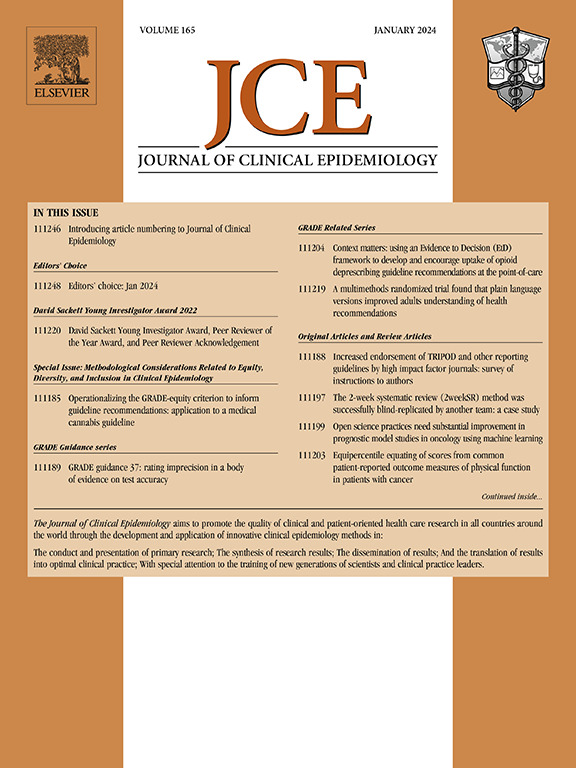Supplementary databases increased literature search coverage beyond PubMed and Embase
IF 7.3
2区 医学
Q1 HEALTH CARE SCIENCES & SERVICES
引用次数: 0
Abstract
Objectives
In health sciences, comprehensive literature searches are crucial for ensuring the accuracy and completeness of systematic reviews. Relying on only a few databases can lead to the omission of relevant studies. The variability in database coverage for different specialties means that important literature might be missed if searches are not broadened. Supplementary databases can enhance the thoroughness of literature reviews, but the efficiency and necessity of these additional searches remain subject to debate. This study aims to explore methods for retrieving publications not indexed in PubMed and Embase, examining coverage of various specialties to determine the most effective search strategies for systematic reviews.
Methods
We selected reviews from the following Cochrane review groups: public health, incontinence, hepato-biliary, and stroke groups. All reviews published in these groups between 2017 and 2022 were analyzed. Publications included in these reviews were manually searched for in PubMed and Embase. If the publication was not found, additional databases such as Cochrane Library, PsycInfo, CINAHL, and ClinicalTrials.gov were searched. Descriptive statistics were used to analyze the data.
Results
The mean coverage of publications in PubMed and Embase across all four speciality groups was 71.5%, with individual group coverage ranging from 64.5% to 75.9%. An average of 5.8% of publications could not be retrieved in any of the databases studied. Additional databases varied in their coverage.
Conclusion
While PubMed and Embase provide substantial coverage, supplementary databases can increase retrieval of more relevant studies and are essential for a comprehensive literature search.
求助全文
约1分钟内获得全文
求助全文
来源期刊

Journal of Clinical Epidemiology
医学-公共卫生、环境卫生与职业卫生
CiteScore
12.00
自引率
6.90%
发文量
320
审稿时长
44 days
期刊介绍:
The Journal of Clinical Epidemiology strives to enhance the quality of clinical and patient-oriented healthcare research by advancing and applying innovative methods in conducting, presenting, synthesizing, disseminating, and translating research results into optimal clinical practice. Special emphasis is placed on training new generations of scientists and clinical practice leaders.
 求助内容:
求助内容: 应助结果提醒方式:
应助结果提醒方式:


